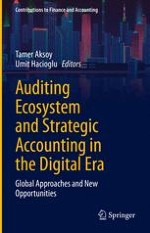This book examines current topics and trends in strategic auditing, accounting and finance in digital transformation both from a theoretical and practical perspective. It covers areas such as internal control, corporate governance, enterprise risk management, sustainability and competition.
The contributors of this volume emphasize how strategic approaches in this area help companies in achieving targets. The contributions illustrate how by providing good governance, reliable financial reporting, and accountability, businesses can win a competitive advantage. It further discusses how new technological developments like artificial intelligence (AI), cybersystems, network technologies, financial mobility and smart applications, will shape the future of accounting and auditing for firms.
